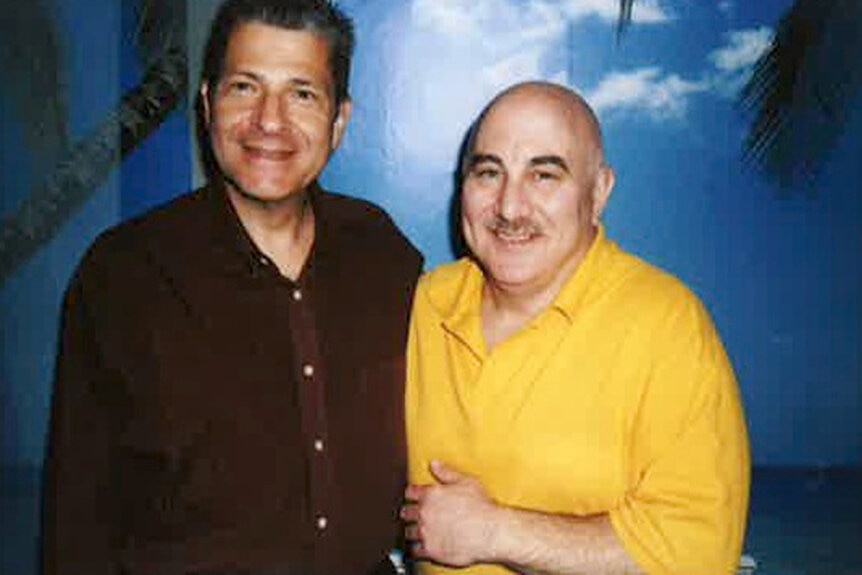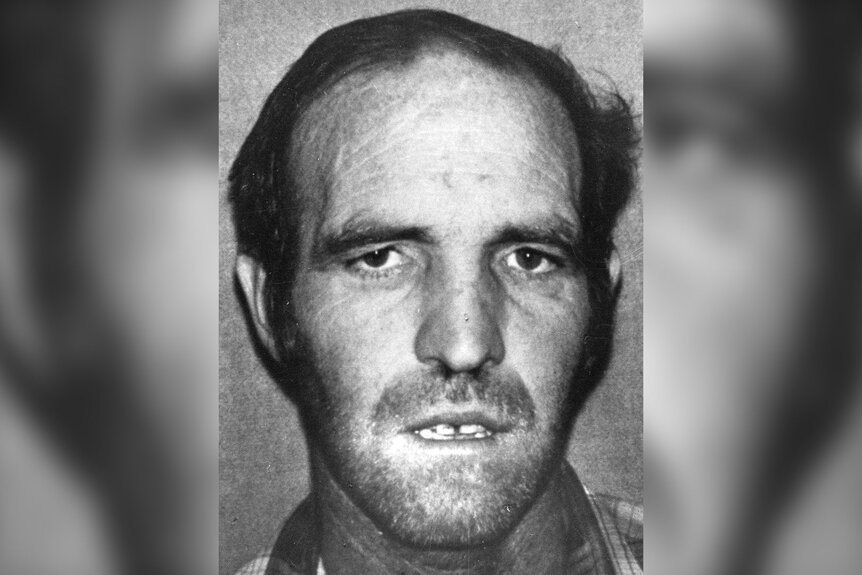Create a free profile to get unlimited access to exclusive videos, breaking news, sweepstakes, and more!
Serial Killers Everywhere? Here Are Some Of Your Favorite True Crime Myths Debunked
From inheriting genes to the lone wolf caricature commonly seen in Hollywood films, take a look at some of the more common theories surrounding what drives people to become serial killers, and why some of these notions have been disproven.

Serial killers are everywhere, consisting of only white men who howl at the moon because they inherited a particular gene. It sounds a little absurd, doesn’t it? That’s because, as you’ve probably guessed, it’s not (entirely) true.
Media coverage and Hollywood blockbusters have helped shape the clichés around serial murder. Coupled with true-crime content surging through the internet, we’re faced with the caricatures of individuals reflective of killers like Ted Bundy and Jeffrey Dahmer.
One man, criminologist and professor Dr. Scott Bonn, author of “Why We Love Serial Killers: The Curious Appeal of the World’s Most Savage Murderers,” has set out to separate fact from fiction. Bonn has spent his career interviewing notorious convicted murderers — including Son of Sam David Berkowitz and BTK Killer Dennis Rader — and specializes in mass media and its relationship with crime.
“Because of the disproportionate amount of attention given to serial killers in both the news and in entertainment, they get more than their lion’s share of exposure, both in fact and fiction,” Dr. Bonn told Oxygen.com. “Those two things together promote the notion that they’re responsible for much more homicide than is, in fact, not true. Not to minimize the horror that they create, but it’s just not nearly as prolific or widespread as one typically believes.”
RELATED: "Imagine Your Last Name Being Gacy:” Psychologist Breaks Down Myths Of Serial Killer Gene
In fact, despite what some perceive as an over-saturation of murder-related news and entertainment, the statistics show serial murder has long been in decline since what Dr. Bonn refers to as the “golden age” of serial killings.
What might be settling to anyone looking beneath the surface of the true-crime ethos is that serial murder only accounts for less than one percent of murders in any given year, according to studies by the FBI. In the United States during the 1980s, there were 768 reported serial murders and 669 in the 1990s, according to a 2016 Radford University study by Dr. Michael Aamodt.
During the 2010s, only 117 serial murder-related deaths were reported.
But our overestimation of how many serial killers lurk in the shadows isn’t the only exaggerated notion out there.
Keep reading to learn about a few more:
1. Most Serial Killers Are White Males
Roughly about 40 to 50 percent of serial killers consist of white males, Dr. Bonn tells Oxygen.com. However, that number isn’t proportionate when compared with the general population.
“That means 50 to 60 percent of [serial killers] are not white males,” Bonn stated.
Per the Washington Post, in 2014, white males made up 31 percent of the U.S. population.
Bonn referred to what he recalled as the “Mount Rushmore” of serial killers, including Ted Bundy, John Wayne Gacy, Jeffrey Dahmer, and Dennis Rader, for why the public carries the misconception that serial killers are typically white men.
However, the racial diversification among serial killers typically reflects the country’s overall population, the FBI agreed. In fact, they named America’s most prolific serial killer as Sam Little — who was Black — and connected him to no fewer than 50 murders of the 93 to which he confessed.
Most of Little’s victims were Black women, which fits the pattern of most serial murders being intraracial, meaning it's most common that people kill within the same race, according to Dr. Bonn. Since white victims receive a disproportionate amount of media coverage, we’re seeing more Caucasian killers.
Chinese-born Charles Ng was one half of a murderous duo responsible for the rape, torture and murders of 11 to 25 men, women and children across northern California. Working with Leonard Lake — who took his own life with cyanide pills — Ng would take many of his victims and film the killers’ sadistic exploits at Lake’s secluded cabin.
Ng remains on death row at San Quentin, prison records show.
Other infamous (and non-Caucasian) serial killers include Night Stalker Richard Ramirez, Billy Chemirmir and Derrick Todd Lee.
And, of course, not all serial killers are men. Women carried out a little more than 11 percent of serial murders during the past century, studies show. Notable women serial killers include Florida’s Aileen Wuornos, who was executed for killing no less than seven men between 1989 and 1990, and Dorothea Puente, the elderly landlady accused of killing nine tenants found buried in the backyard.
2. Serial Killers Are Loners
Contrary to popular belief, the FBI’s Behavioral Analysis Unit states, “the majority of serial killers are not reclusive, social misfits who live alone.” In fact, some lead such extraordinarily ordinary lives that they can often elude suspicion.
One of the more notorious examples proffered by the FBI was Gary Leon Ridgway, known as the Green River Killer. As part of his 28-year reign of terror — during which he confessed to killing 48 Seattle-area sex workers — Ridgway lived a seemingly run-of-the-mill life.
In fact, police found him credible and set him free in 1983, even after a witness spotted Ridgway’s vehicle and swore it belonged to the man who kidnapped her. Ridgway was once in the U.S. Navy, attended church regularly and married three times.
“The notion that these serial killers are all these sort of strange, oddball loners is just not true,” Dr. Scott Bonn told Oxygen.com. “Are there serial killers who fall into that category? Sure.”
Bonn referred to his own conversations with the BTK killer, Dennis Rader, the Kansas man who would “bind, torture, kill” his 10 victims before sending taunting letters to investigators.
“Dennis Rader carried a badge; he was a compliance officer, and he was also the Lutheran church president of the congregation,” said Dr. Bonn. “You also had John Wayne Gacy, highly regarded in his community. The JAYCEE (Junior Chamber of Commerce) man of the year in his community.”
Ridgway and Rader are both serving life sentences.
3. Some Serial Murderers Are Born With A "Killer Gene"
One of the more contemporary theories of what makes serial killers tick is the notion that serial killers possess either a deficiency or a mutated version of the monoamine oxidase A gene, known as the MAOA gene or the “warrior gene.”
In pop culture, the topic of a “serial killer gene” made its way into a 2019 episode of “Riverdale.”
Students with the University of California San Diego described the MAOA gene as an enzyme breaking down the neurotransmitters tasked with carrying serotonin and dopamine — the chemicals we rely on for happiness. According to the study, when MAOA is low, the happiness-forming chemicals are overly increased. The resulting dysregulation causes an adverse reaction to social stimuli and paves the way for aggressive behavior (especially in males).
Reasons for MAOA deficiency can include childhood trauma and loss, according to the study.
However, some, including psychologist Dr. Kanika Bell, said that while she is skeptical of the role of genetics in serial killers, environmental factors might be more of a factor in a killer’s predisposition. She also noted that the public might view genetics as a means of understanding something they can’t otherwise comprehend.
“We don’t understand why someone would ritualistically choose innocent persons and butcher them, sexually assault them, and maim them in the ways that serial killers do,” Bell stated. “I think we are thirsty and looking for something to explain the phenomenon.”
For example, while the San Diego study cites childhood abuse as a possible reason for MAOA deficiency, they also cite millions of children who have suffered the same and haven’t turned into killers.
U.C. San Diego researchers agreed that there was no such thing as a “serial killer gene,” leaning on the standard theory that serial killers are not born. Instead, they are made.
Experts have also voiced concerns that blaming genetics can help murderers not take responsibility for their actions, treading tricky waters, especially in a court of law.
In Italy, a judge attributed genetics when reducing the sentence for convicted murderer Abdelmalek Bayout, who in 2007, stabbed a man to death over a dispute over makeup.
It was the first time in Europe that behavioral genetics affected a criminal sentence.
Undergraduate students have hypothesized that Ted Bundy — who seemingly grew up in a typical household with no obvious predispositions to murder — may have been low on MAOA.
4. Serial Killers Are Insane Geniuses
The idea that serial killers are diabolical masterminds is another common misconception (insert: rising FBI agent seeking help from a fava-bean-loving cannibalistic killer willing to give his expert advice on murder). In fact, on the contrary, studies show that quite the opposite is true.
The average person’s IQ is somewhere between 95 and 105 (this number slightly varies depending on the research). Looking at the intelligence quotients of serial killers, Dr. Michael Aamodt put their average score at about 94.5, just below what’s considered average.
Referring to the aforementioned serial killers, Aileen Wuornos had an IQ of 81, while Gary Ridgway scored an 82.
Murderous duo Ottis Toole and Henry Lee Lucas were both men of below-average intelligence, and yet, they went on to falsely confess to hundreds of murders and were convicted of a combined 12. Toole — infamously linked to the 1981 murder of Adam Walsh — had an IQ of 75, which at the time, was considered borderline intellectually disabled.
It’s plausible that the killer outsmarting law enforcement at every turn is a plot device for crime authors and movie directors everywhere, as seen in films like “The Silence of the Lambs” and shows such as “Dexter.” But in reality, just like us non-killers, their intelligence varies across the scale.
On the same token, most serial killers are not “insane,” at least in the legal sense, according to the FBI’s publication.
“As a group, serial killers suffer from a variety of personality disorders, including psychopathy, anti-social personality, and others,” according to the behavioral analysis unit. “Most, however, are not adjudicated as insane under the law.”
To drive this home, former detective Steven Lampley, writing for Psychology Today, looked at infamous cannibal serial killer Jeffrey Dahmer, who was found legally sane when on trial for killing 17 men, mainly in Milwaukee. Though diagnosed with a host of mental and sexual disorders — including borderline personality disorder — Dahmer admitted he knew killing was wrong and had even tried on several occasions to control his murderous impulses.
In a court of law, a person pleading not guilty by reason of insanity must prove they cannot differentiate right from wrong.
5. Head Injuries Account For Why Serial Killers Murder
For years, scientists have studied the effects of head trauma — especially in early life — to try and pinpoint a definitive correlation between sociopathy and other disorders and an explanation for what makes someone a serial killer. Could traumatic brain injury (TBI) be to blame? Well, the jury’s still out.
Many infamous killers have certainly experienced possible cases of TBI. Son of Sam killer David Berkowitz, who terrorized New York City in the 1970s by fatally shooting six people and injuring another 11, experienced several injuries, according to Crime and Investigation UK. He reportedly hit his head after running into a wall, suffered injury from a pipe, and was even hit by a car. Following the last of these, there was reportedly an apparent shift in Berkowitz’s mood and personality.
Wisconsin-based serial killer Ed Gein, whose horrific murders in the 1940s and 1950s inspired films such as “The Silence of the Lambs” and “The Texas Chainsaw Massacre,” suffered numerous injuries to the head as a result of his alcoholic father’s beatings, according to Cosmos Magazine.
European Studies examining neurodevelopmental and psychosocial risk factors in serial killers and mass murders — including head injury and autism spectrum disorders — are complex because of the rarity of serial killers to evaluate.
“Research into multiple and serial murders is in its infancy,” said researchers. “There is a lack of rigorous studies, and most of the literature is anecdotal and speculative.”
Despite this, they cited studies that showed one in four serial killers had suffered a head injury or conditions that affected the brain in the past, such as meningitis. The same researchers pointed to the media as helping distort perceptions of people with TBI and spectrum disorders.
“Media reporting of violent crime committed by persons with symptoms associated with autism spectrum disorders may generate a harmful stereotype,” according to the study. “This review highlights that although a percentage of individuals considered to have a neurodevelopment disorder is higher than would be expected in the general population, this is nowhere near as high as indicated in the media.”
Moreover, not everyone who suffered a head injury in their youth goes on to kill.
Though studies of living serial killers have proven difficult, Dr. Bonn says postmortem examinations of the brain haven’t offered anything conclusive either.
“That’s the old-standing myth, that they were dropped on their heads,” Dr. Bonn told Oxygen.com. “John Wayne Gacy did have some brain trauma, and after he was executed, they examined his brain and didn’t find anything abnormal.”
Other notorious killers believed to have suffered TBI include the Yorkshire Ripper Peter Sutcliffe and child killer and cannibal Albert Fish.
Of course, more can be found as scientific and psychological investigations into the inner workings of serial killers continue in the future.
































